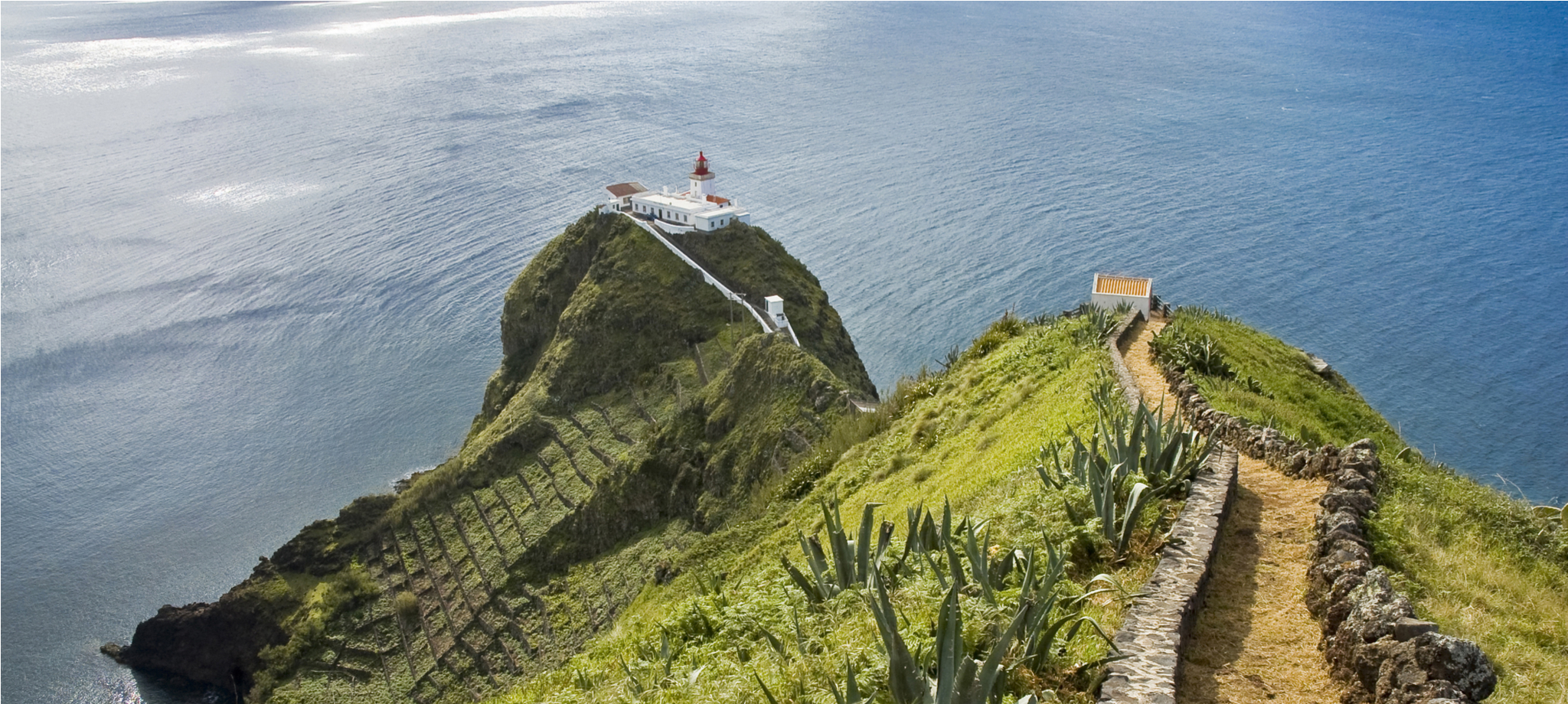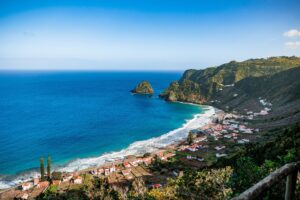Santa Maria, Azores: The Yellow Island
Santa Maria, often called “The Yellow Island,” is the third smallest of the Azores, covering 38 square miles (97 km²). With about 5,500 inhabitants this sun-kissed island is known for its unique charm and vibrant landscapes. Unlike the lush greenery of São Miguel, Santa Maria offers a mosaic of yellow fields, white-washed houses, and golden sandy beaches.
Located just 55 miles from São Miguel (about 30 minutes by plane), Santa Maria is a treasure trove of cultural and natural beauty. The island’s landscape is characterized by the green plaid of the fields, the ripe yellow of the crops, and the black basalt that adorns the facades of its churches. This colorful palette, combined with the joy of local folk festivities and the delicacies of traditional cuisine, makes Santa Maria a must-visit destination in the Azores.
Is Santa Maria, Azores worth visiting?
Santa Maria may be small, but it is brimming with character. The island is known for its dry and warm climate, making it a perfect destination for those seeking sun and relaxation. Santa Maria’s golden beaches, such as Praia Formosa, are among the best in the Azores, offering a serene escape.
In addition to its natural beauty, Santa Maria has a rich cultural heritage. Vila do Porto, the island’s municipal seat, is the oldest settlement in the Azores, with a history dating back to the 15th century. The town is home to charming streets, historical buildings, and vibrant local life, providing a glimpse into the island’s past.
For those who enjoy outdoor activities, Santa Maria offers excellent hiking opportunities. Trails such as the Pico Alto led to the island’s highest point, offering stunning panoramic views of the island’s varied landscapes.
With its sunny climate, vibrant culture, and stunning natural beauty, Santa Maria is a unique destination in the Azores that offers a peaceful yet enriching experience. Whether you’re exploring its historic towns or relaxing on its golden beaches, Santa Maria promises a memorable visit.
Top 10 Frequently Asked Questions about Santa Maria, Azores
1.When is the best time to visit Santa Maria Island?
The best time to visit is during the summer months, from June to September, when the weather is warm and ideal for beach activities.
2. How do I get to Santa Maria Island?
You can reach Santa Maria by flying from São Miguel to Santa Maria Airport (SMA). The flight takes about 30 minutes.
3. What are the must-visit attractions on Santa Maria Island?
Key attractions include Praia Formosa, Barreiro da Faneca (the “Red Desert”), Pico Alto, and the historic Vila do Porto.
4. What outdoor activities are popular on the island?
Popular activities include hiking, bird watching, beach lounging, and exploring the island’s unique geological formations.
5. What is the food scene like on Santa Maria Island?
Santa Maria’s cuisine is rich in traditional flavors, with dishes like “Caldeirada de Peixe” (fish stew) and local sweets such as “Biscoitos de Orelha”.
6. Are there any specific cultural events or festivals on the island?
Santa Maria hosts the Maré de Agosto music festival in August, one of the Azores’ most popular events, attracting artists from around the world.
7. What are the best areas for accommodation on Santa Maria Island?
Vila do Porto offers a range of accommodations, from hotels to guesthouses. Praia Formosa also has some options for those looking to stay near the beach.
8. What are the transportation options for getting around the island?
Renting a car is the best way to explore Santa Maria, as it allows you to reach more remote areas of the island.
9. Are there guided tours available on Santa Maria Island?
Yes, guided tours are available, including nature walks, cultural tours, and adventure excursions like diving and snorkeling. Explore Azores.com personalized Tour Packages.
10. Are there any specific safety tips or precautions to keep in mind while visiting Santa Maria Island?
Santa Maria is generally safe, but it’s advisable to stay hydrated, use sunscreen, and follow local advice when exploring remote areas.

